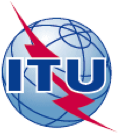 |
ITU-T L.1430 - Recommendation ITU-T L.1430: Methodology for assessment of the environmental impact of information and communication technology greenhouse gas and energy projects |
|---|
| Name of Initiative/Methodology |
Recommendation ITU-T L.1430: Methodology for assessment of the environmental impact of information and communication technology greenhouse gas and energy projects
|
|---|
| Link to the latest published version |
L.1430 (12/2013): Version 1.0
http://www.itu.int/rec/T-REC-L.1430-201312-I/en
|
|---|
|
Developed by
|
The International Telecommunication Union (ITU) |
|---|
| History and Status |
- Approved in December 2013
- Publicly available and used
|
|---|
| Involved companies / parties |
- The Study Group 5 of ITU-T is responsible for studying ICT environmental aspects of electromagnetic phenomena and climate change.
- The SG5 includes Huawei, Hitachi, Telecom Italia, Orange, Littelfuse, Ericsson, Epcos AG, the JRC, TU Budapest, Aalto University, ETRI, NTT
|
|---|
| Scope |
 Organisation env. accounting Organisation env. accounting
 Scope 1 Scope 1
 Scope 2 Scope 2
 Scope 3 Scope 3
|
 Product env. assessment Product env. assessment
 Life cycle approach Life cycle approach
 Use phase only Use phase only
|
|---|
|
 GWP GWP
 Energy (focus on secondary energy) Energy (focus on secondary energy)
|
 Other environmental impacts Other environmental impacts
 KPIs KPIs
|
| System(s) covered by the methodology |
- ICT greenhouse gas and ICT energy projects.
- An ICT GHG (energy) project is an ICT project which uses ICT goods, networks and services to reduce GHG emissions (energy consumption), increase the capture and storage of GHG, or enhance GHG removals (energy generation and storage)
- Projects implemented in the ICT sector or other sectors
|
|---|
| Goals |
- Identifying GHG sources, sinks and storage systems of a project, as well as energy consumers, generators and storage systems
- Assessing, monitoring and reporting on GHG emissions reduction and energy consumption reductions of ICT projects
- Providing information to organisations in charge of the projects
- Assessing first and second order effects (i.e. reductions) of ICT projects
- Intended as a complement to [ISO 14064-2] and [GHG Protocol]
|
|---|
| Generic features |
- GHG programs may include GHG offsets and credits.
- The GHG and energy effects of the project are considered for the projects’ full life cycle, but may be quantified only on the most significant stage (i.e. use phase).
- First order effects: impact created by the physical existence of ICTs and the processes involved (e.g. GHG emissions, e-waste, use of hazardous substances, use of non-renewable resources)
- Second order effects: impact and opportunities created by the use and application of ICTs, incl. environmental load reduction effects
- The general steps include:
- Planning of the ICT GHG or ICT energy project (definition of project boundary, baseline scenario, etc.)
- Identification of GHG sources, sinks and storage systems of the project, as well as energy consumers, generators and storage systems
- Quantification of GHG and energy effects for the baseline scenario and the project results
- Reporting and verification of the project
- The assessed time period of the baseline scenario concurs with that of the ICT project
- Any uncertainties associated with the GHG and energy effects of each project activity shall be described in the final report.
|
|---|
| ICT-specific features |
- The user shall refer to [ISO 14064-2] for general requirements on ICT projects.
- A description of ICT projects shall be completed, e.g. using examples of ICT greenhouse gas and energy projects provided in Appendix I. ICT projects may be implemented in both the ICT sector and the non-ICT sector.
- GHG projects shall only be those intended for GHG emission reductions and/or removal enhancements, without regulatory enforcement and economic advantages
- Significant unintended changes (either one-time, upstream or downstream) need to be considered in the GHG and energy assessment boundary. E.g. replacement of low performance equipment with high performance equipment (potential dismantling of discarded equipment); activities that include transportation of employees or products.
|
|---|
| Examples of implementation / experience feedback |
None identified – to be filled later
|
|---|
| Interaction with other methodologies |
- [ITU-T L.1410] Methodology for environmental impact assessment of information and communication technology goods, networks and services
- [ISO 14064-2] Greenhouse gases – Part 2: Specification with guidance at the project level for quantification, monitoring and reporting of greenhouse gas emission reductions or removal enhancements
- [ISO 14064-3] Greenhouse gases – Part 3: Specification with guidance for the validation and verification of greenhouse gas assertions
- [GHG Protocol] A Corporate Accounting and Reporting Standard
- [Kyoto Protocol] to the United Nations Framework Convention on Climate Change
|
|---|





 © 2018 ICTFOOTPRINT.eu – ICTFOOTPRINT.eu has received funding from the European Commission’s Horizon 2020 research and innovation programme under the Grant Agreement no 690911. The content of this website does not represent the opinion of the European Commission, and the European Commission is not responsible for any use that might be made of such content.
© 2018 ICTFOOTPRINT.eu – ICTFOOTPRINT.eu has received funding from the European Commission’s Horizon 2020 research and innovation programme under the Grant Agreement no 690911. The content of this website does not represent the opinion of the European Commission, and the European Commission is not responsible for any use that might be made of such content.